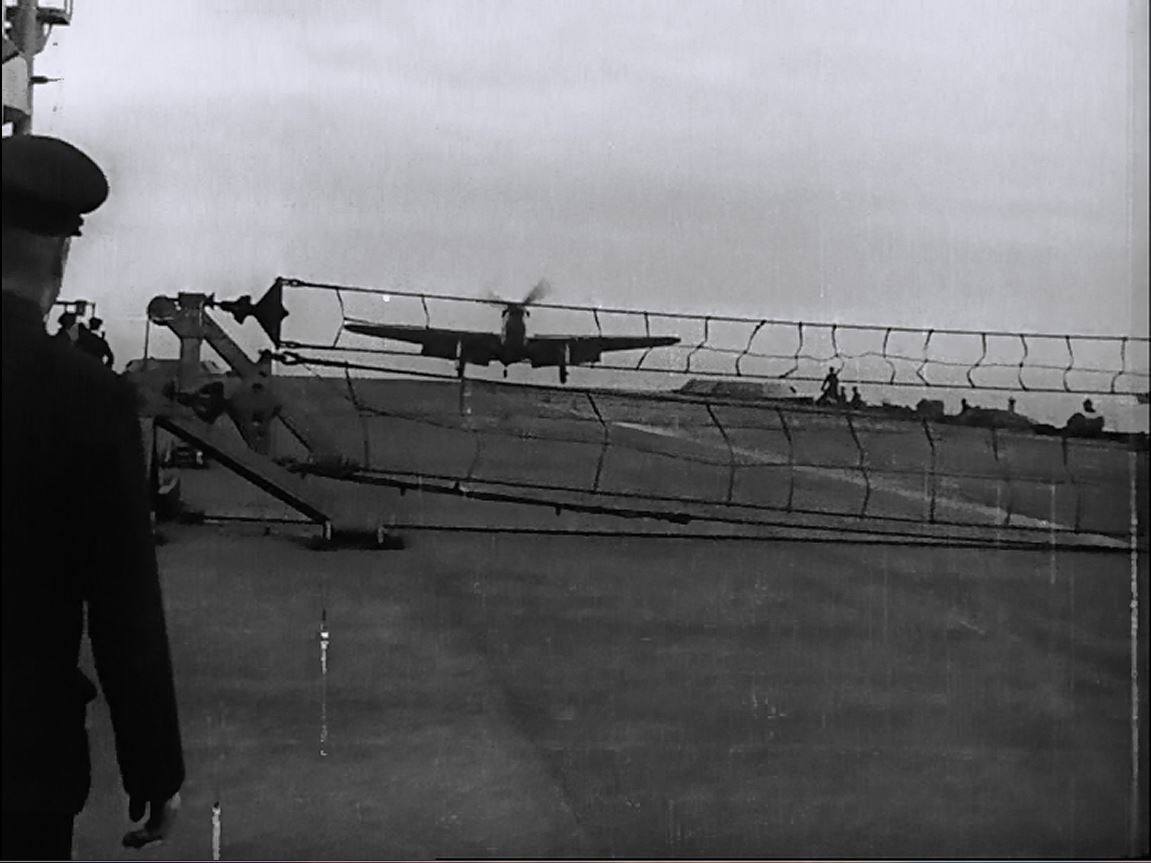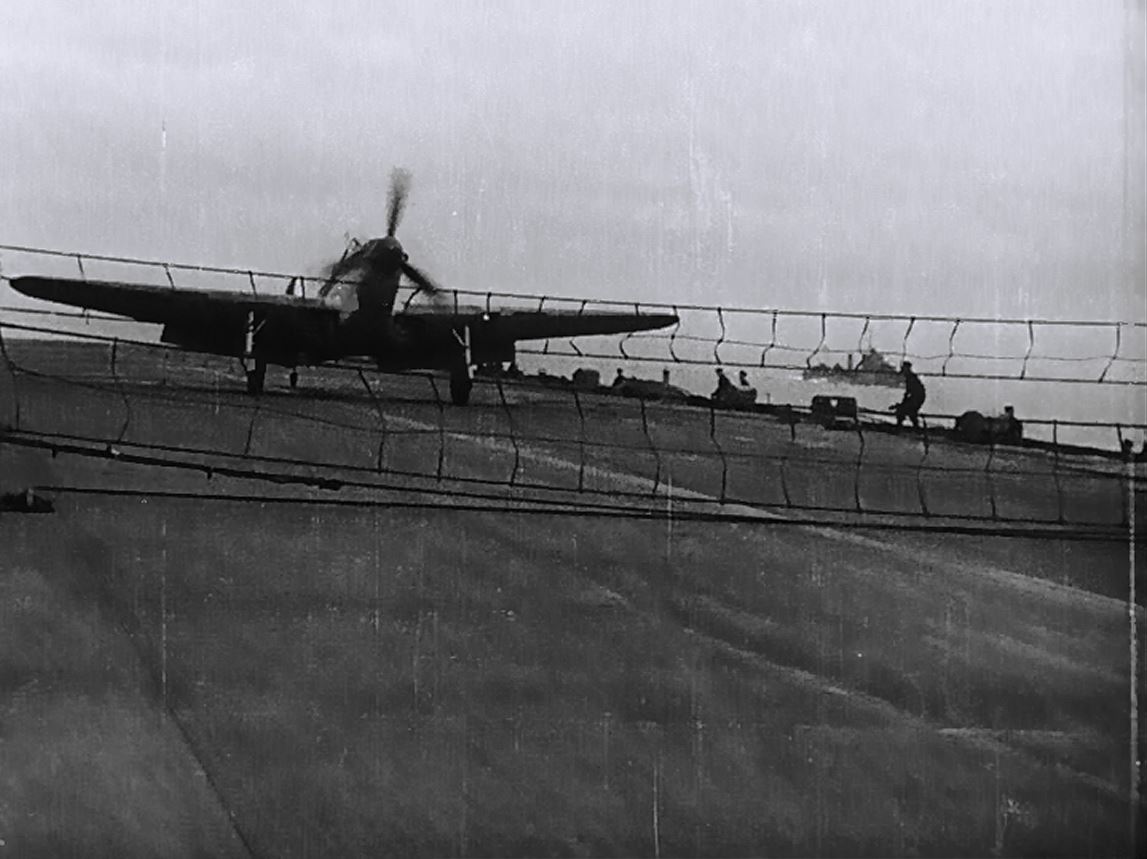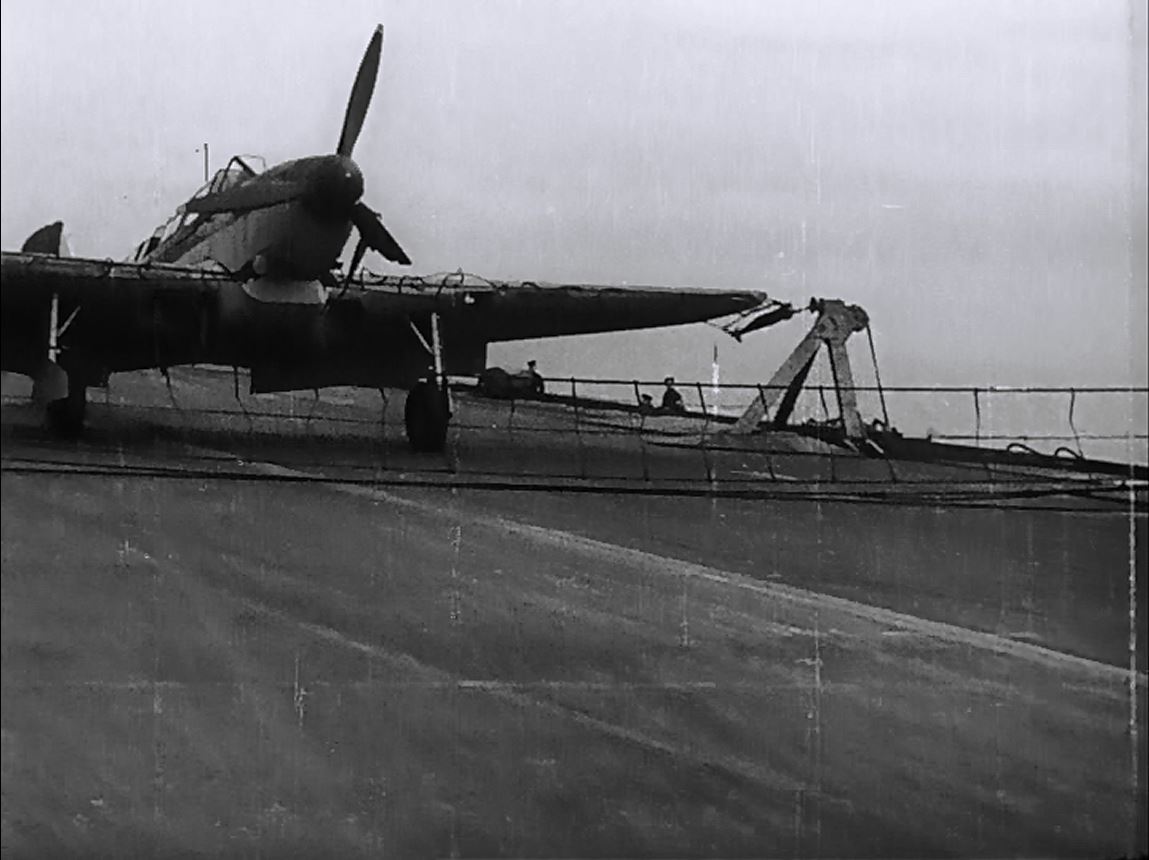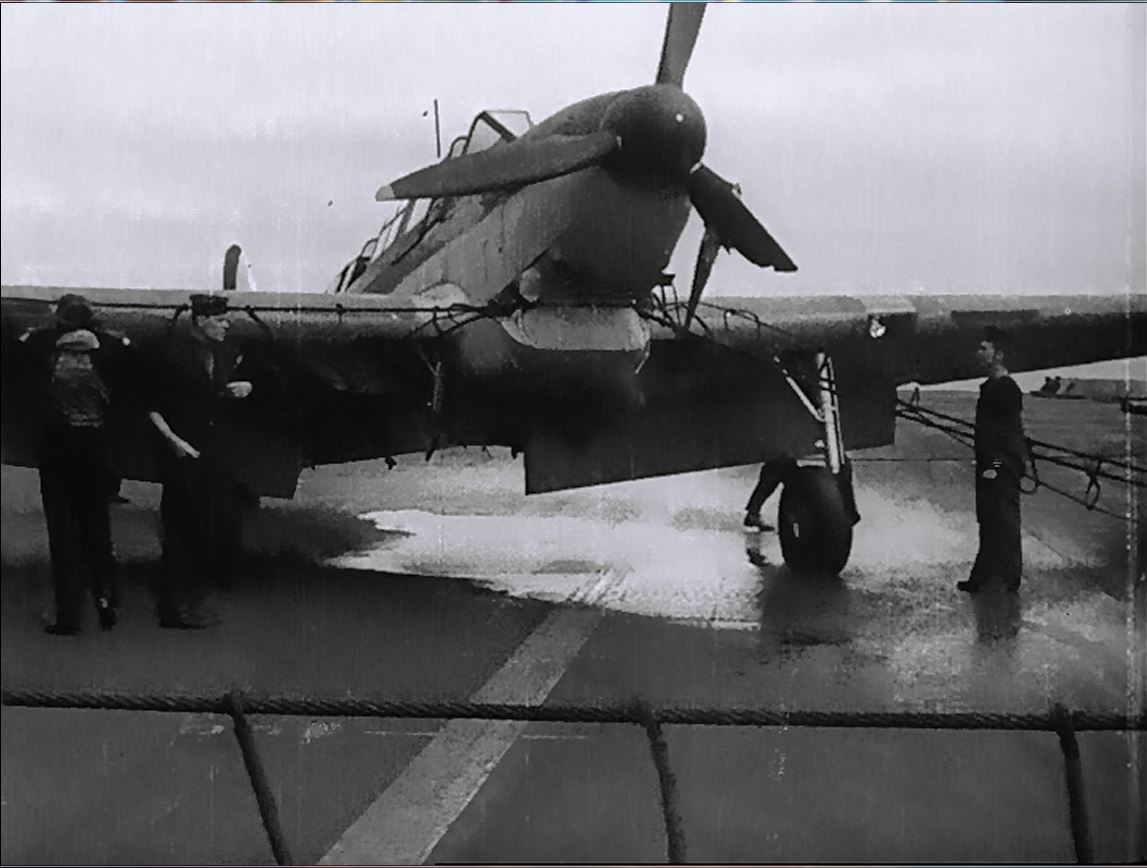“The place and timing of the Fulmar’s debut on operations were most propitious. The Fulmar arrived in the Mediterranean theatre when convoys were fighting their way through to beleaguered Malta against the onslaught of Italy’s yet-to-be-disenchanted Regia Aeronautica. The Italian bombers were just the new Fairey fighter’s meat and the Fulmar pilots gobbled it voraciously...”
“The Fulmar provided a much-needed boost to the FAA’s capability in the early years of the Second World War. It was not superseded until 1943, when it was replaced by the Seafire. It was first in action against the Regia Aeronautica in the Mediterranean during the protection of convoys heading for Malta, destroying ten Italian bombers between September and October 1940.”
SUCCESS STORY
The secret to the Fulmar’s success probably lay in its four hour endurance (plus extra time as combat reserves), its high controlled dive speed and the introduction of Carrier Air Patrols under the guidance of Fleet Fighter Direction Officers. The earlier concept of fighters launching as the enemy came into view simply didn’t cut it. But the Fulmar proved that loitering CAP fighters, at good height, could be vectored in by radar for effective interceptions.
Service History
The arrival of the Fulmar fighter in the Mediterranean in September 1940 was to have an immediate impact. Air superiority was now possible over the fleet. As a result, the Royal Navy could now go where it had previously only ventured at extreme risk.
Illustrious’ Fulmars began shooting down “shadowers” almost as soon as the carrier arrived. And the bomber attacks that often followed were now being broken up.
The first recorded combat came on 2 September 1940, when four Savoia Marchetti SM 79s were destroyed and a Cant Z501 flying-boat was claimed later in the day.
It was a result as much due to the innovative use of radar as it was the capabilities of the Fulmar.
Clever direction, with the determination and bravery of its pilots, enabled the Fulmar to punch far above its weight. By January 1941, the Fulmars on Illustrious had claimed 26 Italian aircraft shot down.
Its Italian opponents were within the Fulmar I’s operational parameters. It had a reasonable margin of speed over most of the bombers at interception heights needed to attack warships. And the lightly armed Italian fighters – while no racehorses themselves – were not considerably more manoeuvrable. Put one in front of even a short burst of the Fulmar I’s eight 0.303 machine guns and they had a tendency to go to pieces.
But it was not easy going. Only the Fulmar’s dive characteristics – when combined with radar direction from the Illustrious’ Fighter Direction Officers – enabled it to catch the increasingly common SM79 bombers.
Nevertheless, the RN Mediterranean Fleet possessed total air superiority for a full four months from September 1940 - destroying over 40 Italian aircraft.
The Fulmar’s “happy time” was to come to an abrupt halt with the arrival of X Fliegerkorps in January 1941. The faster, better armed and armoured German aircraft made the Fulmar’s limitations obvious. The fleet fighter continued to operate stoically within range of Me 109s and 110s and was never an “easy kill”. But the number of effective interceptions rapidly began to fall away as the German aircraft - if they got under a Fulmar’s guns - didn’t stay there for long.
Minute from First Sea Lord to Prime Minister
[CAB 120/ 295] 26 May 1941
Availability of Fulmar fightersIn recent weeks the wastage of Fulmar fighters in the Mediterranean has been high. In a telegram dated 13th May, Commander-in-Chief, Mediterranean, said:– ‘I must again urge the necessity of immediate increase in the supply of F.A.A. fighters. The supply at present visualised is quite inadequate. Detailed examples of air activity in weather generally unsuitable for attacking aircraft. From the 18th April to the 12th May, 18 Fulmars have made 390 sorties, 338 being fighter patrols. 25 interceptions were made, 15 plus 5 enemy aircraft were shot down, 18 enemy aircraft sighted. During this period 12 Fulmars were lost by rendering beyond repair, 4 being lost after combat. There are now 15 serviceable and 14 under repair or overhaul. The least number required to maintain fighter efforts is 3 squadrons of 12 each, and a reserve of 36.’ The situation in regard to the Fulmars in the Eastern Mediterranean is as follows:
FORMIDABLE: Known to be serviceable 23.5.41. = 5Probably serviceable by 24.5.41. = 7At Malta from Operation ‘Splice’ = 5In ARGUS for Operation ‘Rocket’ =3 +3 ex ‘Splice’ At sea on passage between Cape and Suez. = 15 At sea on passage between U.K. and Cape. = 11 Packed to leave U.K. before the end of May. = 10 Packed for transit to Mediterranean = 16 En route via Takoradi = 6
In addition to the above there is a total of 63 Fulmars for ARK ROYAL, VICTORIOUS, and the fighter catapult ships, together with 13 which are in the training schools in the U.K.
The reserves for all the above are:–
First Line. 12 Training. 10 At Contractors. 9Lent to Air Ministry for trials, modifications, etc. 6 In addition there are at least 26 Fulmars unserviceable abroad.
I do not think the situation in the Eastern Mediterranean is entirely satisfactory, but in the circumstances obtaining I think it is the best that can be done. An increased production of Fulmars has been promised for the next three months.
It was no accident that Illustrious’ Fulmars were distracted and then overwhelmed by the Stuka attacks of January 10. But that was because the demonstrated effectiveness of the armoured carrier’s fighter and TBR complement that made Illustrious such a valuable target.
HMS Formidable’s 806 and 803 squadrons continued to give a good accounting for the Fulmar once Illustrious was gone. During three months of intensive operations, the fighters time and time again disrupted attacking bombers sufficiently to negate their strikes against the feet and convoys.
This intensity – combined with a lack of replacements due to emergency production diversions during the Battle of Britain – was to take its toll on May 26 when Formidable’s tired, patched-up and under-strength Fulmar squadrons could not sustain sufficient cover to protect their home ship.
Between them, Formidable’s 806 and 803 squadrons claimed 56 aircraft destroyed. This was almost half the total number of kills to be ascribed to the Fulmar in World War II.
Ark Royal’s 807 and 808 squadrons claimed 30 enemy aircraft destroyed before that carrier was sunk in November 1941.
“The Fairey Fulmar was the Admiralty’s very latest design of a fighter aircraft at that time. But it was too big, ponderous and underpowered due to their usual insistence on providing a rear cockpit for an observer, who could only sit inside there like a prune while his pilot got on with the combat. Although, to be fair, it would be he who would find their way back to the Carrier after the fight.”
The Fulmar's much derided dual-seat configuration - brought about by the Royal Navy's requirement an Observer be carried for reconnaissance and navagation purposes - demonstrated its worth in May 1941.
Fulmars from 800Z Flight which, while operating in atrocious weather at night from the flight deck of the just-completed HMS Victorious, was able to help maintain contact with the German battleship Bismark. Three succeeded in finding and observing Bismark. Two "rookies" were forced to ditch after becoming lost in the heavy weather and dark.
Bismark from the air during her one and only foray into the North Atlantic.
But by mid 1941 the Fulmar’s weaknesses were becoming increasingly apparent.
The hunt for a replacement adopted a sense of urgency – but Britain’s production capacities were struggling under submarine blockade, air attack and the imperative to protect the home islands.
Even as the navy fought for sufficient numbers of Hurricanes and Spitfires to be diverted for carrier use, they turned to the United States’ F4F as a potential solution.
The Fulmar was becoming increasingly vulnerable to enemy bombers and fighters by this time. But much of the criticism directed at the fleet fighter is unfair.
Flag Officer Commanding, Force H., on Operation Substance
108. Outstanding points in this operation were:
(a) Effective work of Fulmars.
The Fulmars of ARK ROYAL contributed in no small measure to the safe arrival of the convoy at its destination.. On 23rd July formations of enemy aircraft were intercepted on three occasions. On the first occasion, two were shot down for certain and another two probably destroyed, whilst the survivors which reached the fleet were in no state to carry out an accurate attack.
On the second occasion, as the Fulmars were about to intercept, the bombers released their bombs on the destroyer screen and immediately withdrew.
Finally an attempted T/B attack was completely broken up and driven off, leaving two aircraft shot down with another damaged and possibly lost.
On 25th July the only enemy formations to approach the fleet were once again thoroughly routed. A force of torpedo bombers withdrew before the fighters could reach it and the only high level bombing attack was intercepted about 15 miles from the fleet, when four enemy planes were destroyed for certain with one probably destroyed and two more damaged. All bombs were jettisoned.
One Italian officer survivor stated he had been shot down by a Hurricane. It is evident that the enemy hold our Fleet Air Arm fighters in higher esteem than do our own Fulmar pilots.(Signed) J. F. SOMERVILLE,
Vice-Admiral, Force H
“The navigator or air gunner we carried in our aircraft did not have a machine gun and consequently often felt inadequate. However, they had W/T radio and could keep in touch with the fleet when radio silence could be broken. We often gave them a tommy gun, which gave some moral support, and from the pilot’s point of view they could be very helpful, as long as they remembered to open the hatch before firing! They could also assist with spotting aircraft and shipping and gave the pilot advice on ‘friend or foe’, where a second pair of eyes are always beneficial.”
In February 1942, 803 and 806 Squadrons were deployed to Ceylon. An RAF reconnaissance squadron already there had been equipped with eight Fulmar IIs.
No sooner had the FAA squadrons arrived than the air base at Ratmalana was attacked by Japanese carrier-based aircraft on April 5. As they struggled to take off, four of the six operational Fulmars of 803 squadron were destroyed and only one Japanese aircraft claimed as a kill.
This is often pointed to as the inevitable failure of the Fulmar in the face of more advanced Japanese machines. However, few aircraft “bounced” at their airfield make a good accounting of themselves.
Such was the fate of General MacArthur’s USAAF P-40 Warhawks at Manila, just a few weeks earlier.
Some vindication for the Fulmar was to come on April 9: The RAF’s 273 squadron used its remaining Fulmar IIs as single-seat fighters to intercept a strike of Kate B5N bombers. One fleet fighter was lost for one bomber claimed as “certain” and five “damaged”. Eight Hurricanes were also downed in the engagement which claimed 24 Japanese aircraft destroyed.
HMS Hermes came under attack that same day by a force of 85 dive bombers. While 806 squadron’s six Fulmars arrived while Hermes was still afloat, they were too late to save the carrier.
They claimed three D3A dive-bombers destroyed. A further eight Fulmars from 803 and 273 squadrons arrived after the carrier sank. They claimed one more kill.
However, two Fulmars were shot down by the dive bombers. Once 'clean', the Val proved to be marginally faster and more maneuverable than the heavy British fighter.





“The CO, Fraser Harris, and I intercepted the fighters and a dogfight ensued. I was turning as tight as the Fulmar allowed and taking shots whenever possible. Both CR42s were badly damaged and one Italian pilot baled out. Luckily we suffered no damage. There was no doubt that a Fulmar on its own would have been in trouble. However, the Italians did not press their attack – fortunately for us.”
Sub Lt Peter Twiss, while flying cover for the Malta convoys from HMS Ark Royal, later famous as a test pilot, recalled;
‘This was the first time I had been in combat with the CR. 42, and was under the impression that they would out manoeuvre the heavy Fulmar. With flaps partly lowered, I was able to turn inside the second aircraft and give it a long burst. The pilot turned over his aircraft and baled out.’
In June 1942 the Fulmars of 807 squadron took part in another Malta convoy, Operation Harpoon. Five enemy aircraft were claimed destroyed. This came at the cost of three Fulmars. The squadron was recalled to the UK and became the first to re-equip with Seafires.
The fleet fighter’s last great battle came in August 1942. 809 and 884 squadrons aboard Victorious were to deploy 16 Fulmars in Operation Pedestal. They were assigned to low-level defence. The Sea Hurricanes and Martlets were to provide top-cover and interception services.
In the intense air battles of Pedestal which saw HMS Indomitable bombed, the Fulmars claimed nine enemy aircraft destroyed. Three of their own number was lost.
Attempts to convert the aircraft into a night fighter proved unsuccessful. The radar equipment disrupted the aerodynamics and added weight to such a degree as to make it virtually impossible for the Fulmar to catch any likely opponent.
The last Fulmar fighter squadron was withdrawn in March 1943.
In the final accounting, the Fulmar proved a worthy aircraft. It was credited with 122 kills.
A total of 40 Fulmars were lost to enemy action. About 16 of these were in air-to-air combat. Only three Fulmars were lost to single-seat fighters: The 5-to-3 kill-to-loss ratio shows the Fulmar giving as good as it got against its single-seat opponents.
Most losses were incurred by the defensive armament of bombers. This is probably because the slow fighter was forced to approach from astern where its large radiator and prominent cockpit became vulnerable to defensive gunfire at the point-blank range necessitated by 0.303in machineguns.












